Abstract
Procaryotic microorganisms accumulate several polymers in the form of intracellular inclusions as a strategy to increase survival in a changing environment. Such inclusions avoid osmotic pressure increases by tightly packaging certain macromolecules into the inclusion. In the present paper, a model describing changes in volume and density of the microbial cell as a function of the weight of the macromolecule forming the inclusion is derived from simple theoretical principles. The model is then tested by linear regression with experimental data from glycogen accumulation in Escherichia coli, poly-beta-hydroxybutyrate accumulation in Alcaligenes eutrophus, and sulfur accumulation in Chromatium spp. The model predicts a certain degree of hydration of the polymer in the inclusion and explains both the linear relationship between volume of the cell and weight of the polymer and the hyperbolic relationship between density of the cell and weight of the polymer. Other implications of the model are also discussed.
Full text
PDF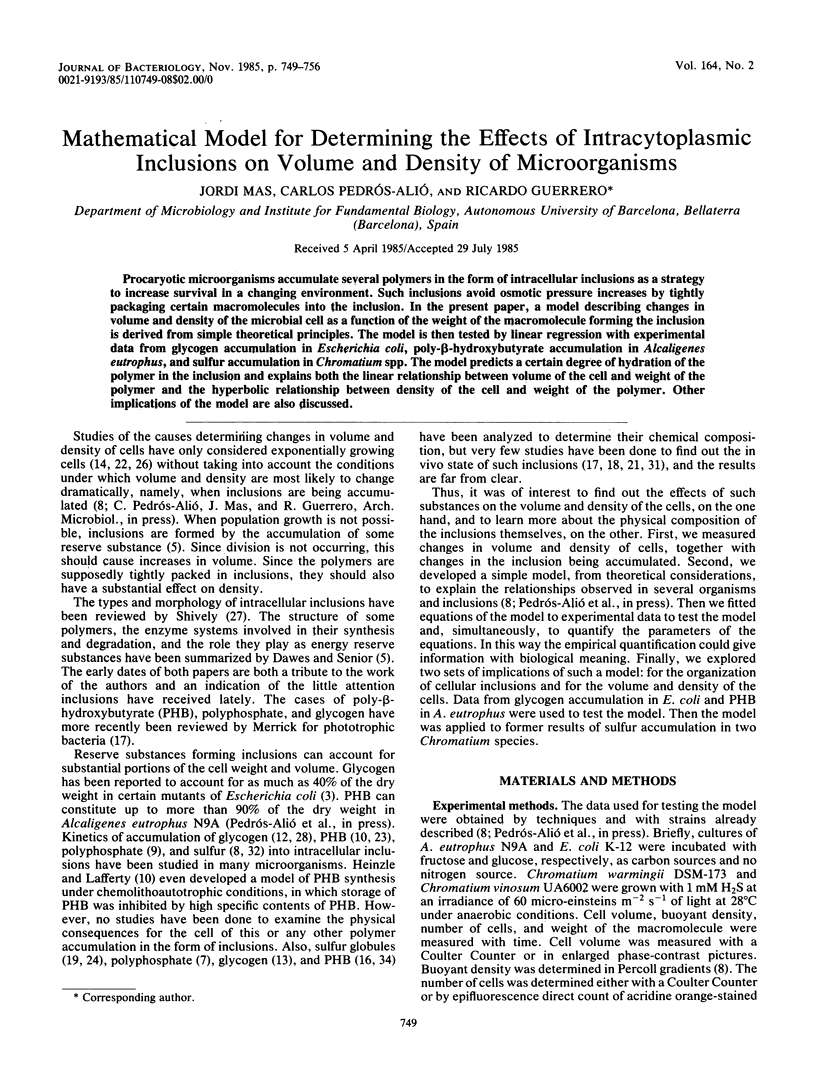
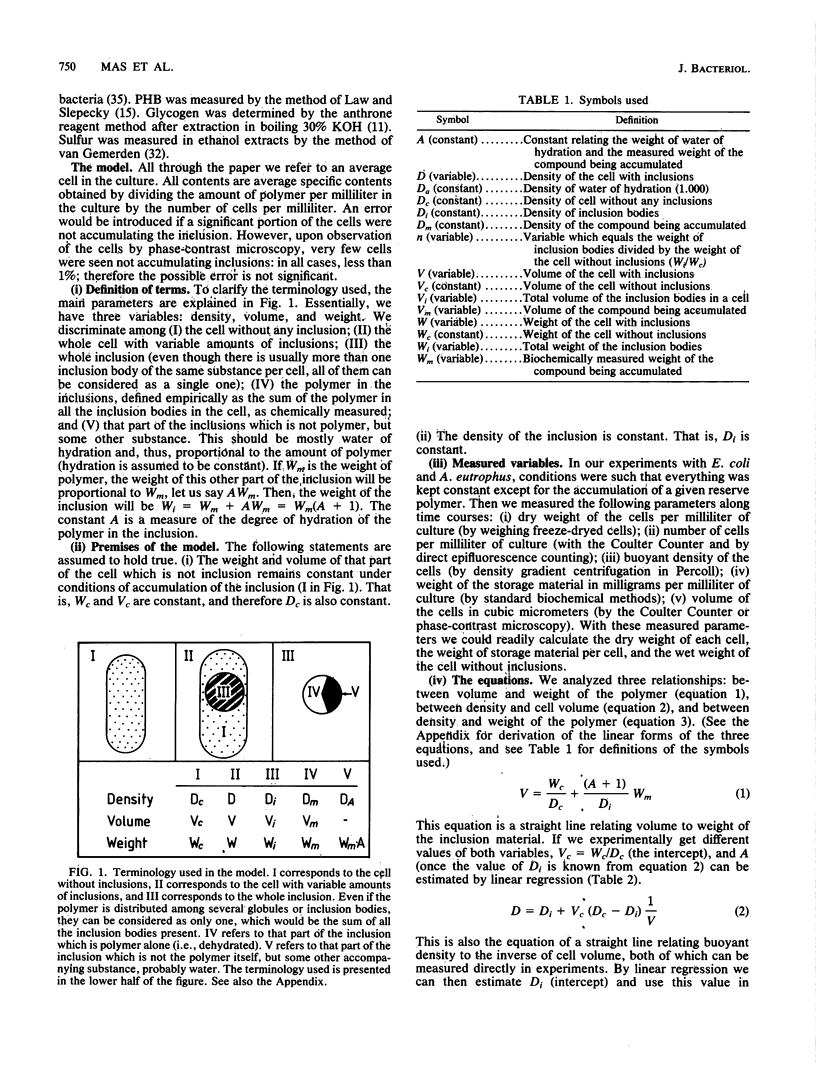
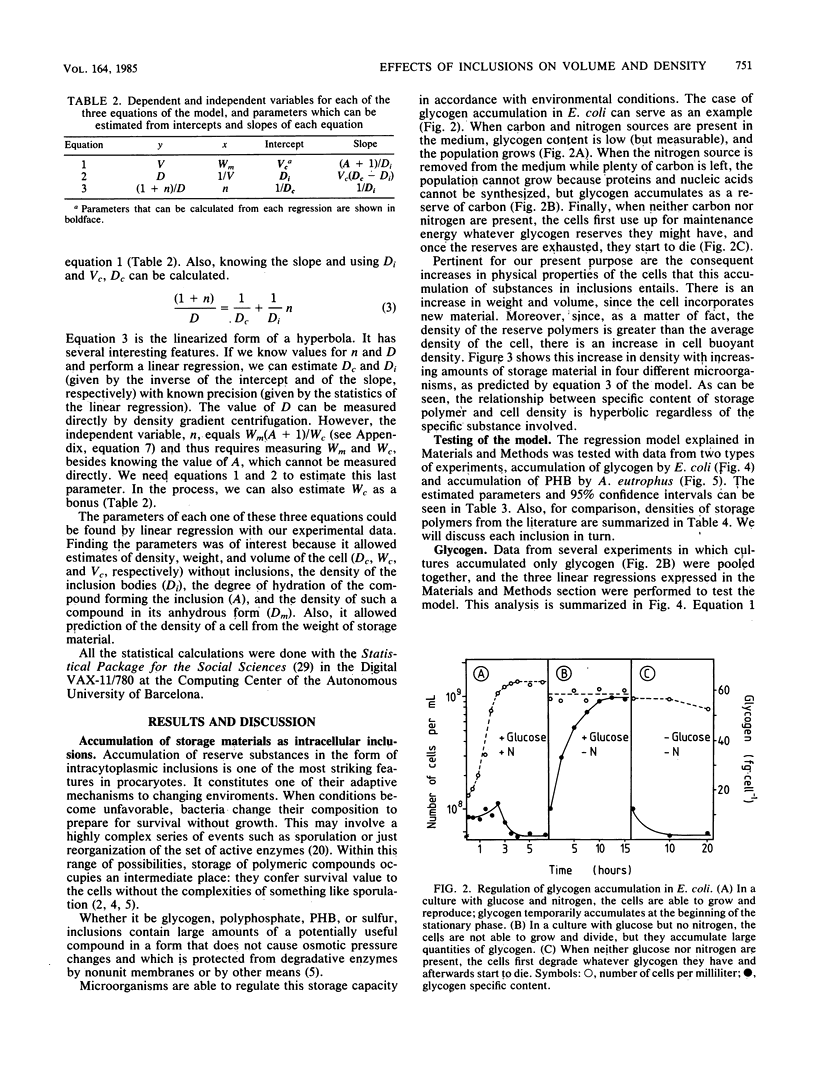
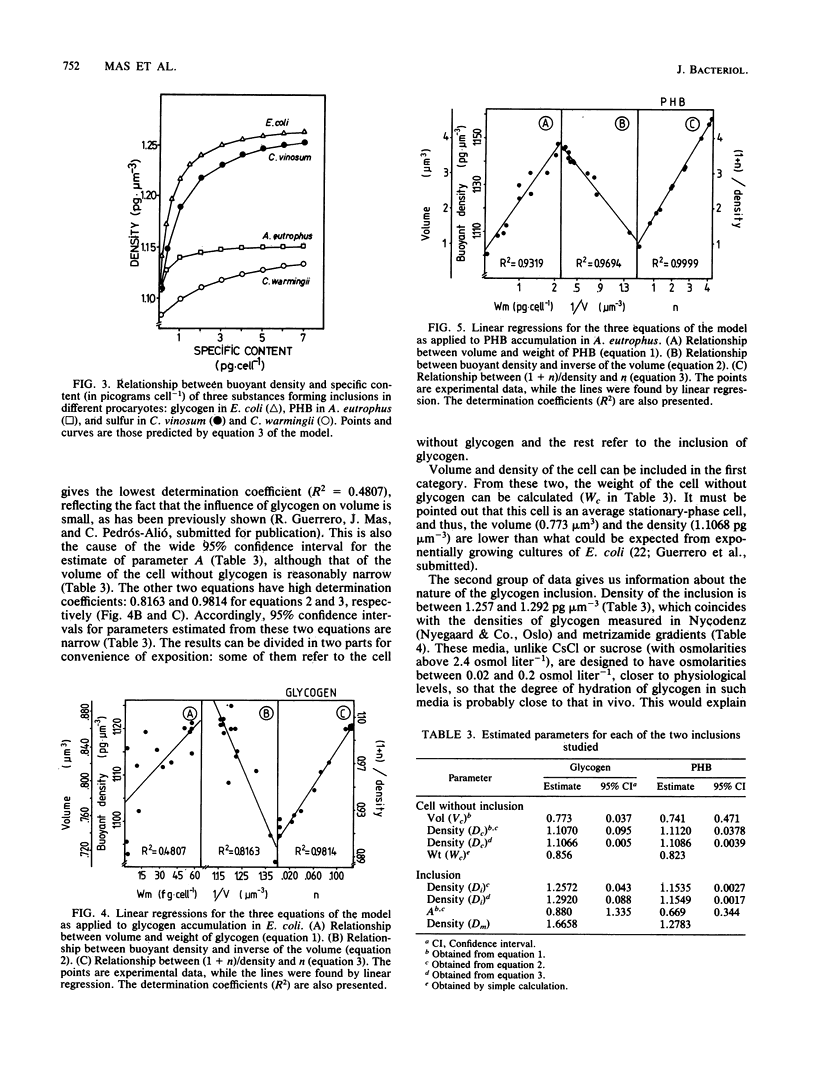
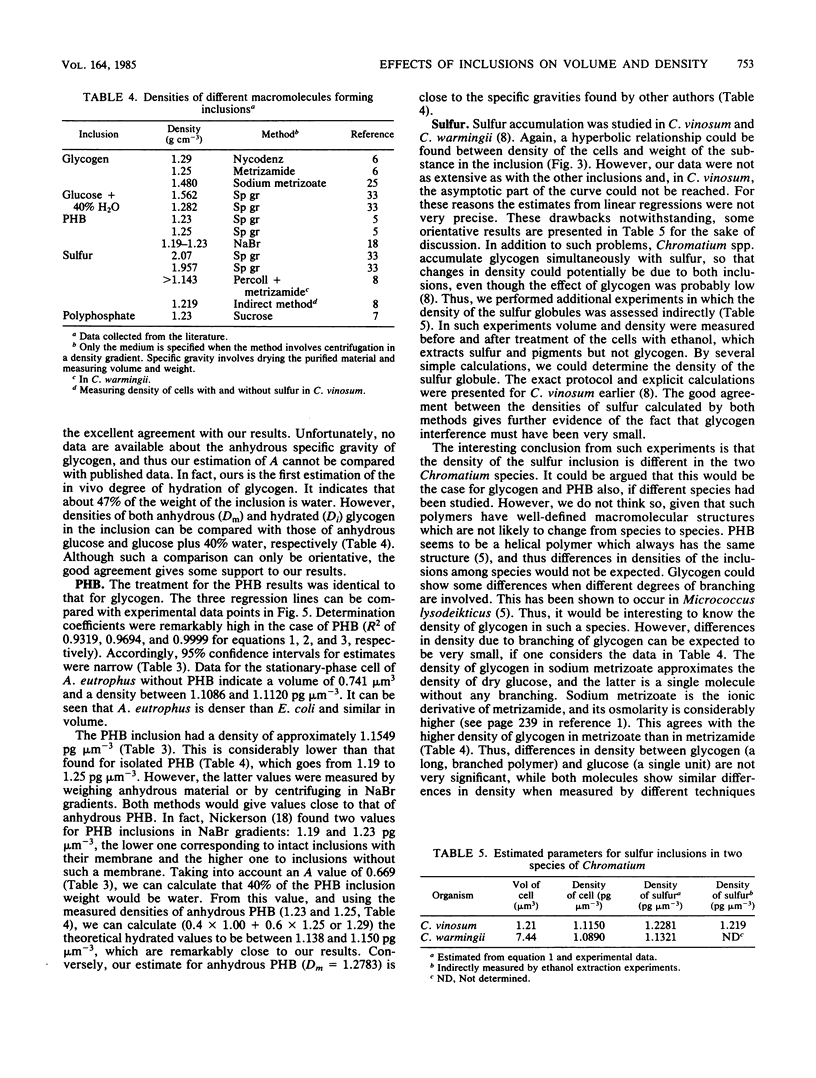
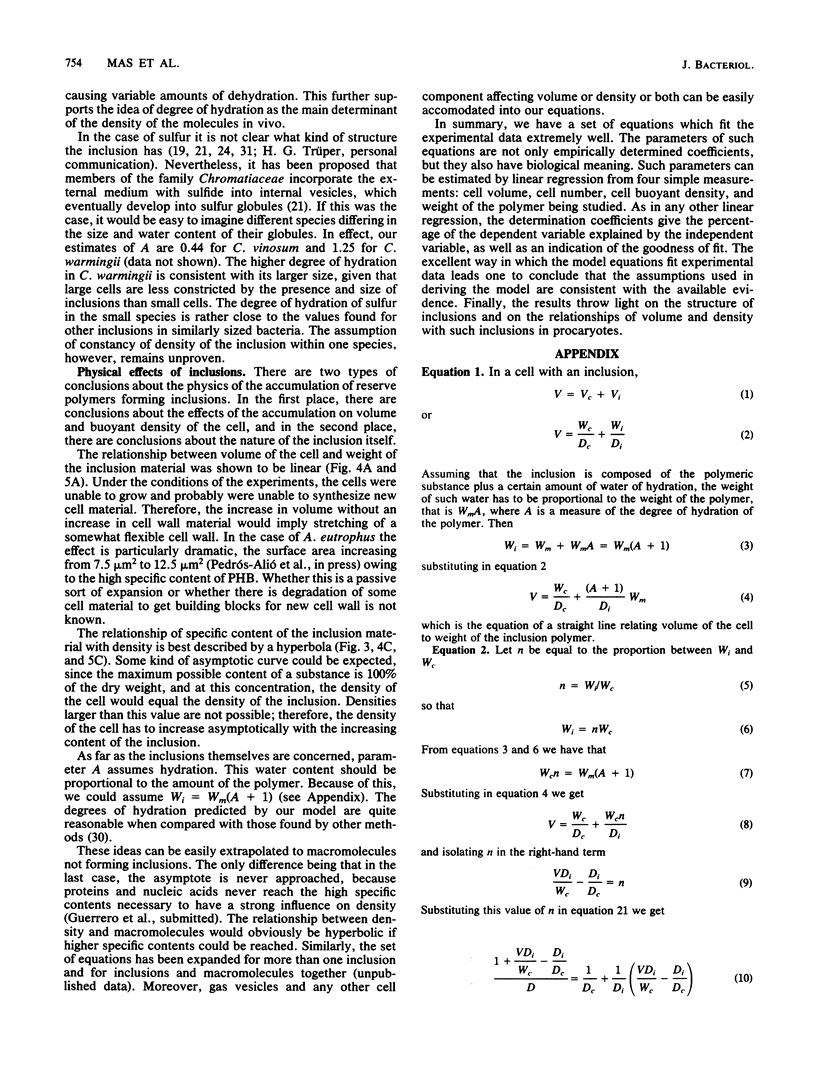
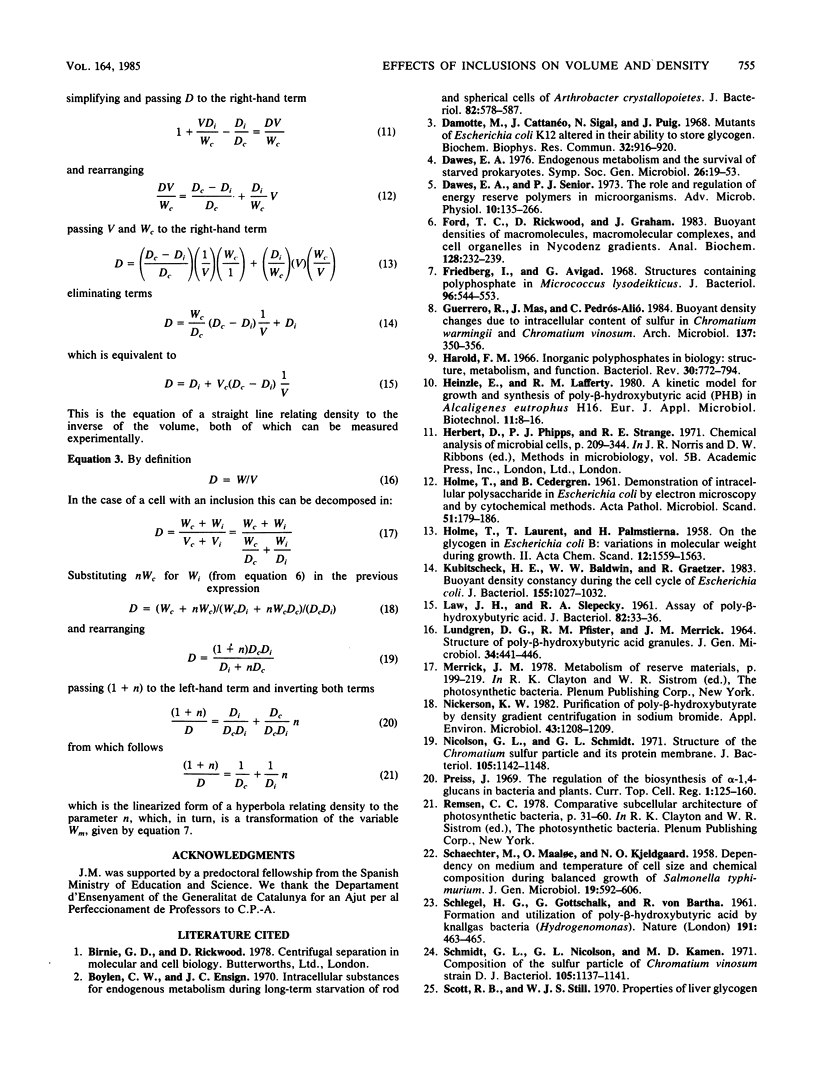
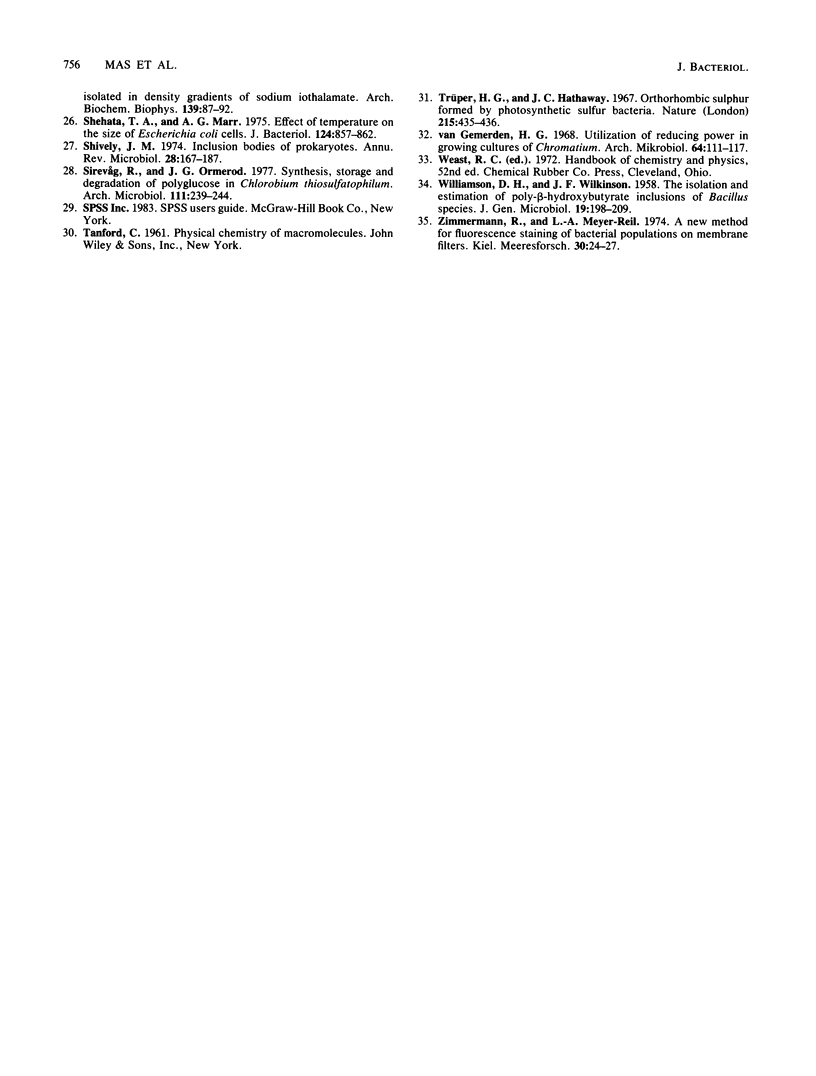
Selected References
These references are in PubMed. This may not be the complete list of references from this article.
- Boylen C. W., Ensign J. C. Intracellular substrates for endogenous metabolism during long-term starvation of rod and spherical cells of Arthrobacter crystallopoietes. J Bacteriol. 1970 Sep;103(3):578–587. doi: 10.1128/jb.103.3.578-587.1970. [DOI] [PMC free article] [PubMed] [Google Scholar]
- Damotte M., Cattanéo J., Sigal N., Puig J. Mutants of Escherichia coli K 12 altered in their ability to store glycogen. Biochem Biophys Res Commun. 1968 Sep 30;32(6):916–920. doi: 10.1016/0006-291x(68)90114-9. [DOI] [PubMed] [Google Scholar]
- Dawes E. A., Senior P. J. The role and regulation of energy reserve polymers in micro-organisms. Adv Microb Physiol. 1973;10:135–266. doi: 10.1016/s0065-2911(08)60088-0. [DOI] [PubMed] [Google Scholar]
- Ford T., Rickwood D., Graham J. Buoyant densities of macromolecules, macromolecular complexes, and cell organelles in Nycodenz gradients. Anal Biochem. 1983 Jan;128(1):232–239. doi: 10.1016/0003-2697(83)90370-6. [DOI] [PubMed] [Google Scholar]
- Friedberg I., Avigad G. Structures containing polyphosphate in Micrococcus lysodeikticus. J Bacteriol. 1968 Aug;96(2):544–553. doi: 10.1128/jb.96.2.544-553.1968. [DOI] [PMC free article] [PubMed] [Google Scholar]
- HOLME T., CEDERGREN B. Demonstration of intracellular polysaccharide in Escherichia coli by electron microscopy and by cytochemical methods. Acta Pathol Microbiol Scand. 1961;51:179–186. doi: 10.1111/j.1699-0463.1961.tb00357.x. [DOI] [PubMed] [Google Scholar]
- Harold F. M. Inorganic polyphosphates in biology: structure, metabolism, and function. Bacteriol Rev. 1966 Dec;30(4):772–794. doi: 10.1128/br.30.4.772-794.1966. [DOI] [PMC free article] [PubMed] [Google Scholar]
- Kubitschek H. E., Baldwin W. W., Graetzer R. Buoyant density constancy during the cell cycle of Escherichia coli. J Bacteriol. 1983 Sep;155(3):1027–1032. doi: 10.1128/jb.155.3.1027-1032.1983. [DOI] [PMC free article] [PubMed] [Google Scholar]
- LAW J. H., SLEPECKY R. A. Assay of poly-beta-hydroxybutyric acid. J Bacteriol. 1961 Jul;82:33–36. doi: 10.1128/jb.82.1.33-36.1961. [DOI] [PMC free article] [PubMed] [Google Scholar]
- LUNDGREN D. G., PFISTER R. M., MERRICK J. M. STRUCTURE OF POLY-BETA-HYDROXYBUTYRIC ACID GRANULES. J Gen Microbiol. 1964 Mar;34:441–446. doi: 10.1099/00221287-34-3-441. [DOI] [PubMed] [Google Scholar]
- Nickerson K. W. Purification of Poly-beta-Hydroxybutyrate by Density Gradient Centrifugation in Sodium Bromide. Appl Environ Microbiol. 1982 May;43(5):1208–1209. doi: 10.1128/aem.43.5.1208-1209.1982. [DOI] [PMC free article] [PubMed] [Google Scholar]
- Nicolson G. L., Schmidt G. L. Structure of the Chromatium sulfur particle and its protein membrane. J Bacteriol. 1971 Mar;105(3):1142–1148. doi: 10.1128/jb.105.3.1142-1148.1971. [DOI] [PMC free article] [PubMed] [Google Scholar]
- SCHAECHTER M., MAALOE O., KJELDGAARD N. O. Dependency on medium and temperature of cell size and chemical composition during balanced grown of Salmonella typhimurium. J Gen Microbiol. 1958 Dec;19(3):592–606. doi: 10.1099/00221287-19-3-592. [DOI] [PubMed] [Google Scholar]
- SCHLEGEL H. G., GOTTSCHALK G., VON BARTHA R. Formation and utilization of poly-beta-hydroxybutyric acid by Knallgas bacteria (Hydrogenomonas). Nature. 1961 Jul 29;191:463–465. doi: 10.1038/191463a0. [DOI] [PubMed] [Google Scholar]
- Schmidt G. L., Nicolson G. L., Kamemd Composition of the sulfur particle of Chromatium vinosum strain D. J Bacteriol. 1971 Mar;105(3):1137–1141. doi: 10.1128/jb.105.3.1137-1141.1971. [DOI] [PMC free article] [PubMed] [Google Scholar]
- Shehata T. E., Marr A. G. Effect of temperature on the size of Escherichia coli cells. J Bacteriol. 1975 Nov;124(2):857–862. doi: 10.1128/jb.124.2.857-862.1975. [DOI] [PMC free article] [PubMed] [Google Scholar]
- Shively J. M. Inclusion bodies of prokaryotes. Annu Rev Microbiol. 1974;28(0):167–187. doi: 10.1146/annurev.mi.28.100174.001123. [DOI] [PubMed] [Google Scholar]
- Sirevåg R., Ormerod J. G. Synthesis, storage and degradation of polyglucose in Chlorobium thiosulfatophilum. Arch Microbiol. 1977 Jan 11;111(3):239–244. doi: 10.1007/BF00549360. [DOI] [PubMed] [Google Scholar]
- Truper H. G., Hathaway J. C. Orthorhombic sulphur formed by photosynthetic sulphur bacteria. Nature. 1967 Jul 22;215(5099):435–436. doi: 10.1038/215435a0. [DOI] [PubMed] [Google Scholar]
- WILLIAMSON D. H., WILKINSON J. F. The isolation and estimation of the poly-beta-hydroxybutyrate inclusions of Bacillus species. J Gen Microbiol. 1958 Aug;19(1):198–209. doi: 10.1099/00221287-19-1-198. [DOI] [PubMed] [Google Scholar]
- van Gemerden H. Utilization of reducing power in growing cultures of Chromatium. Arch Mikrobiol. 1968;64(2):111–117. doi: 10.1007/BF00406969. [DOI] [PubMed] [Google Scholar]


